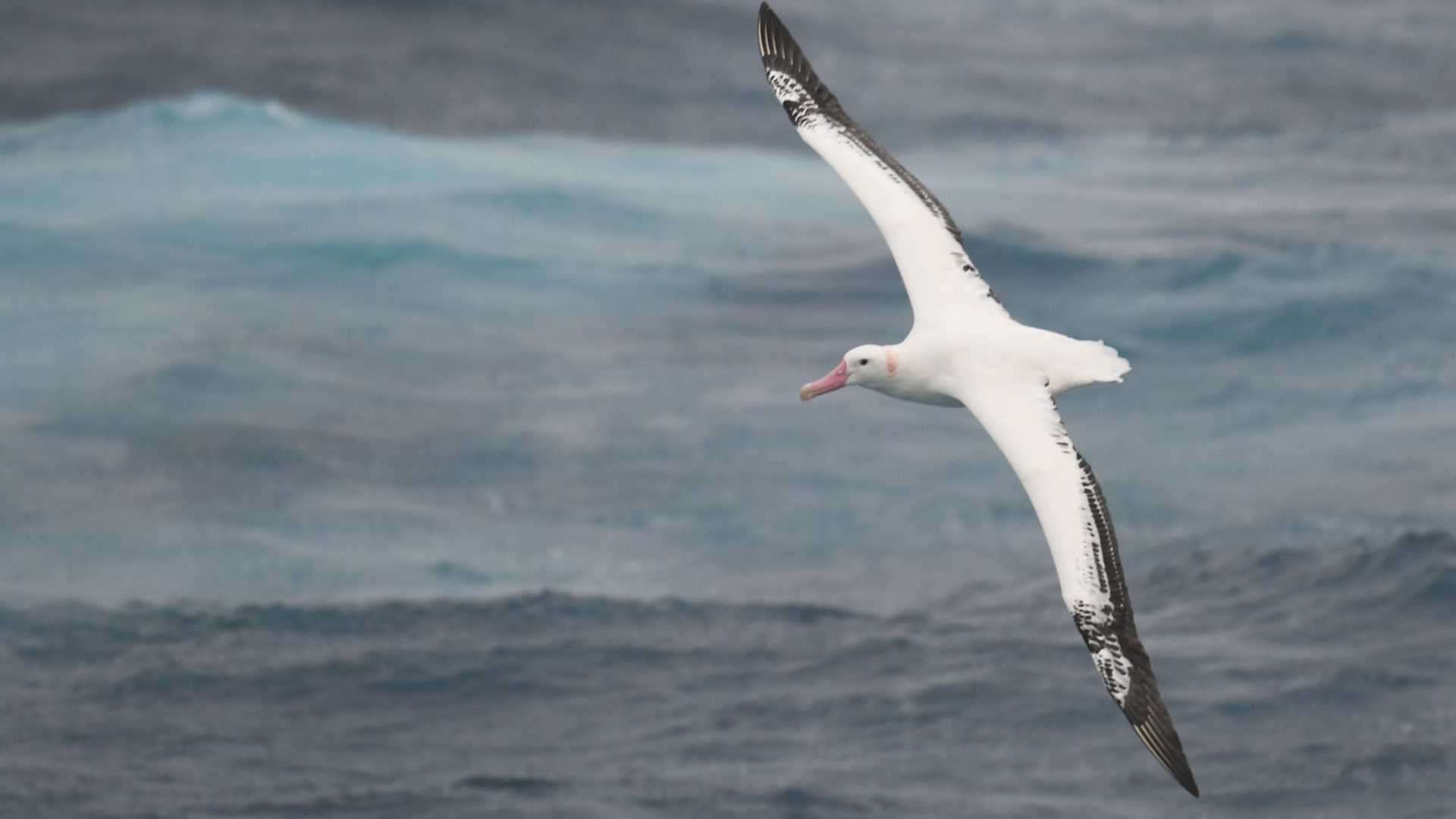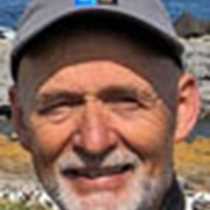In the early morning we crossed the Antarctic Convergence. This front defines the line where the tempered waters from the north clash with the cold water from the south, along with the air that constantly cycles around the Antarctic continent.
A full day at sea allows for a variety of educational activities. The first presentation of the day was given by our Global Perspectives guest speaker Dr. Andy Clarke, who introduced us to the geography, history, and natural habitats of South Georgia. He also showed examples of previous and present conservation issues. Later in the morning, National Geographic photographer Ralph Lee Hopkins shared his long-time experience of expedition photography. His talk, “Telling the Story of Your Expedition,” contained a number of useful tips on how to succeed with your camera. Just as his talk was wrapping up, we got the message that the first wandering albatross was following the ship, and we had a great opportunity to test our skills right away. We were all excited about this first encounter with the most iconic bird of the Southern Ocean! Out on deck, Jamie Coleman, naturalist and bird expert, willingly provided facts and photo tips to the guests. In addition to the wanderer, we also saw some of the other seabirds endemic to these waters: Cape petrel, northern giant petrel, black-browed albatross, and Antarctic prion.
After lunch we enjoyed listening to two of our naturalists. Elise Lockton introduced us to the famous explorer Sir Ernest Shackleton with “Shackleton & the Trans-Antarctic Expedition,” and Maya Santangelo gave a presentation titled “Seals of the Southern Ocean.” Just after her talk we were all encouraged to be out on deck as we were passing Shag Rocks. These isles are the only rocks sticking up between the Falkland Islands and South Georgia and are home to a large number of nesting imperial shags. We got to see swarms of these colorful birds as we passed their nesting ground. Stay tuned for tomorrow; South Georgia lies ahead!







